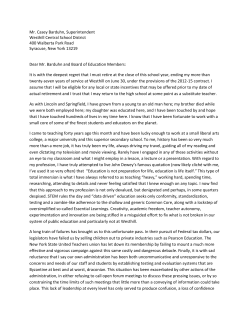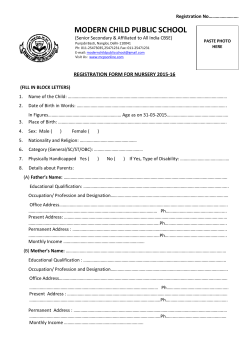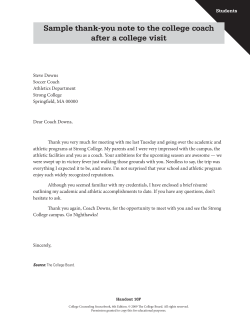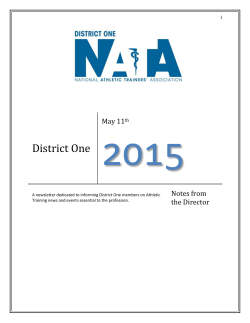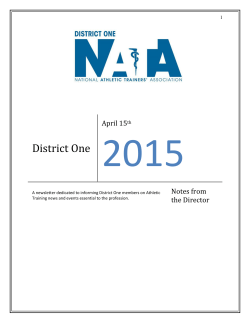
Diane Sartanowicz, MS, ATC, LAT - Athletic Trainers of Massachusetts
AT H L E T I C T R A I N E R S O F M A S S A C H U S E T T S SPOTLIGHT Diane Sartanowicz, MS, ATC, LAT Education University of Rhode Island Indiana State University Workplace The Fesseden School West Newton, MA Why did you want to become an Athletic Trainer? In high school I always loved my first aid and CPR classes as well as Anatomy and Physiology and playing sports. As I started looking into colleges, it made perfect sense to combine the things I loved and came up with Sports Medicine. What do you enjoy most about the profession? Teaching others! You never stop educating your student-athletes about their injury and how to get better. Give one word that describes athletic trainers. Caring Who have been your role models in the healthcare profession? First and foremost were my parents who were both teachers and educators. Throughout my career, I have been fortunate enough to work with the most amazing Athletic Trainers. Charlie Thompson was the Head A.T. at URI when I was a student and I had the privilege of working with him on the EATA Executive Board. What advice would you give to students interested in the Athletic Training Profession? I had the good fortune to work as an accredited clinical instructor with Northeastern University's Athletic Training Education Program and now I am a preceptor with Bridgewater State University. It is one of my favorite parts of my job. I enjoy the interaction I have with our young professionals. I have always told my students to pursue their dreams. They have the passion and ability to work in any of the settings of our profession. N I R A Where do you see our profession in the future? I am a firm believer in what NATA President Jim Thornton says, "It IS a great day to be an Athletic Trainer." The future of the profession is brighter than ever. We are in the spotlight of concussion education, heat acclimatization and sudden cardiac death. Our members are leading the way on task forces and committees helping to write position statements on these important subjects. More than ever the public knows who we are and what we do. We are no longer just their to tape ankles and make ice bags. We are recognized as health care providers for ALL active individuals. The skill sets we possess are in demand and are valued by all of our patients. Our legislative efforts at the national level is gaining momentum and is a positive spot in our profession C G What is the most valuable lesson that you have learned as an athletic trainer? Becoming a role model for your students. You get there by being a good listener, a communicator and a leader. What is the next step for you personally in the profession? I have had the good fortune of volunteering and giving back to the profession in so many ways. I was President of ATOM, President of EATA and now I am the D1 Treasurer. They have all been challenging both personally and professionally. Who knows what the next step for me would be, but I do know I will always support the profession like volunteering for the Boston Marathon and Bay State Games each and every year. What do you enjoy doing when you are not working as an Athletic Trainer? Spending time with family and friends. Staying active; swimming, biking, running.
© Copyright 2025

